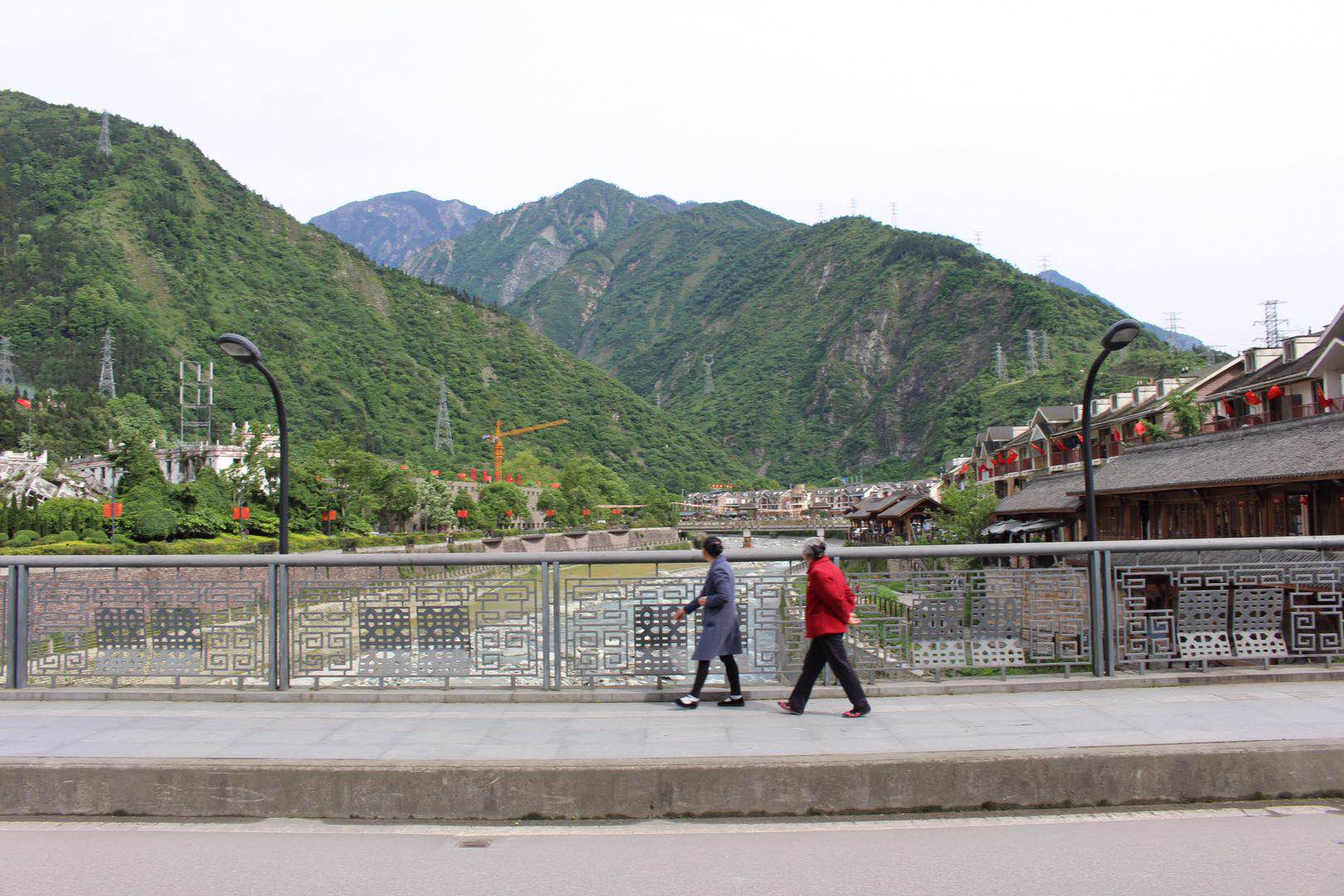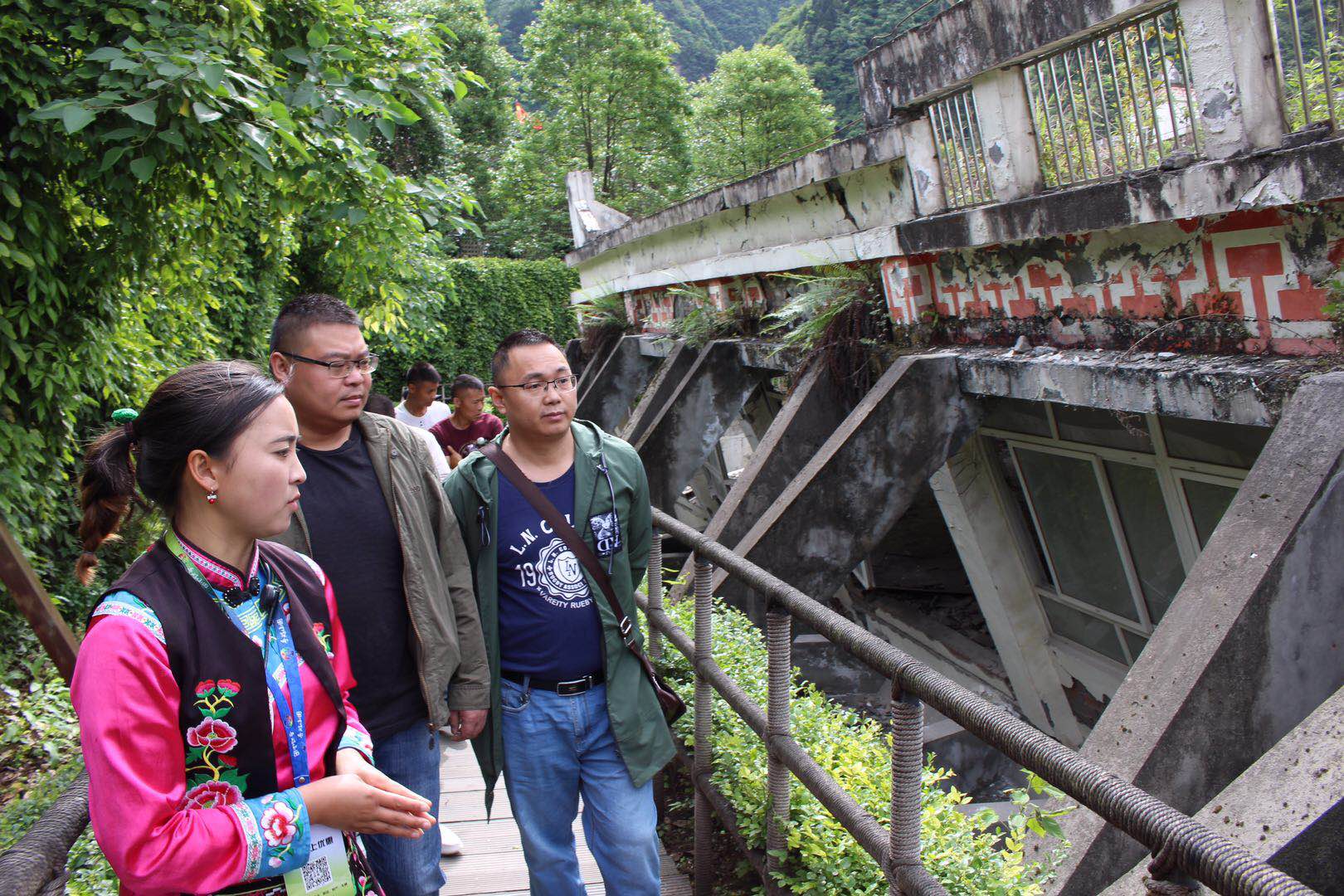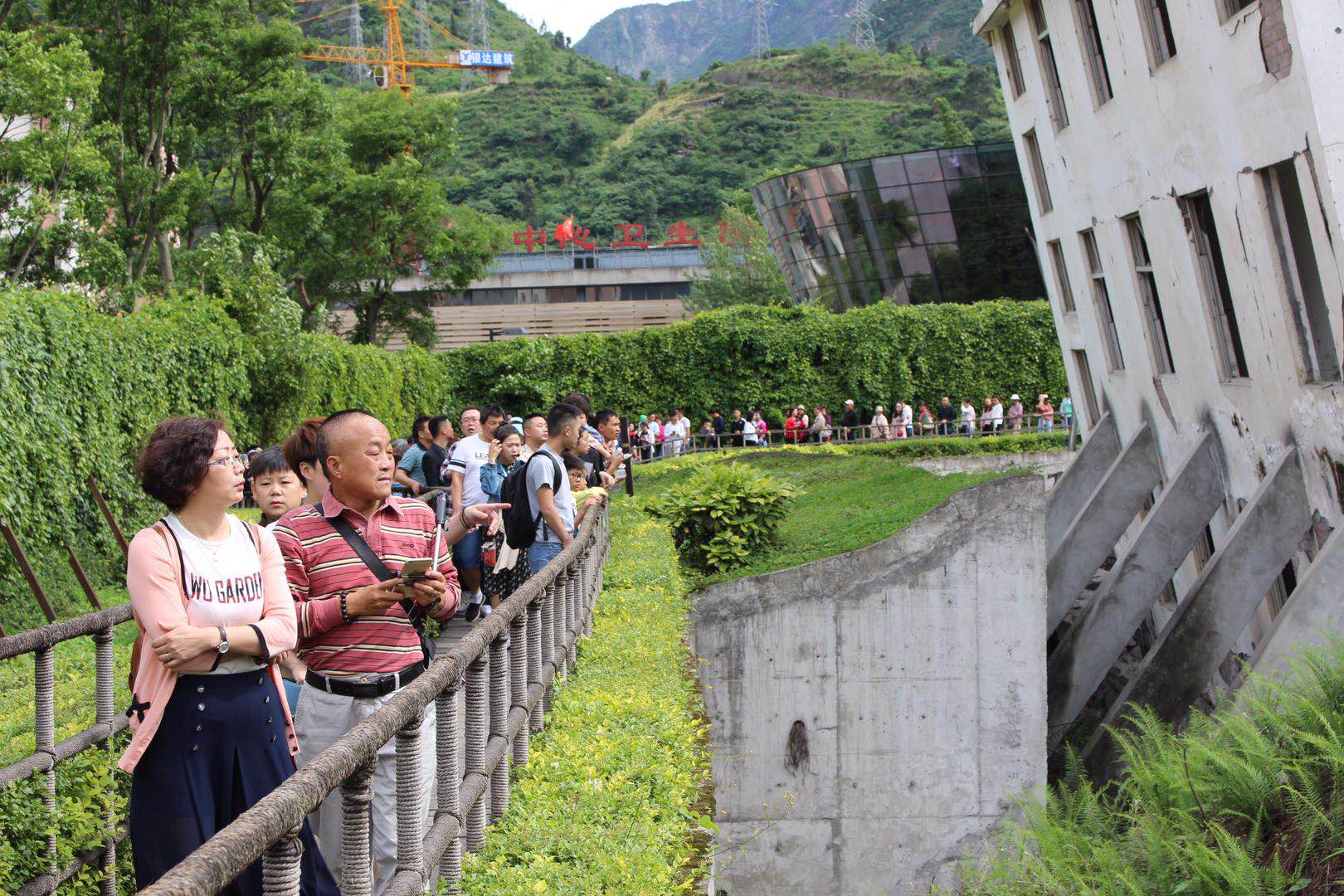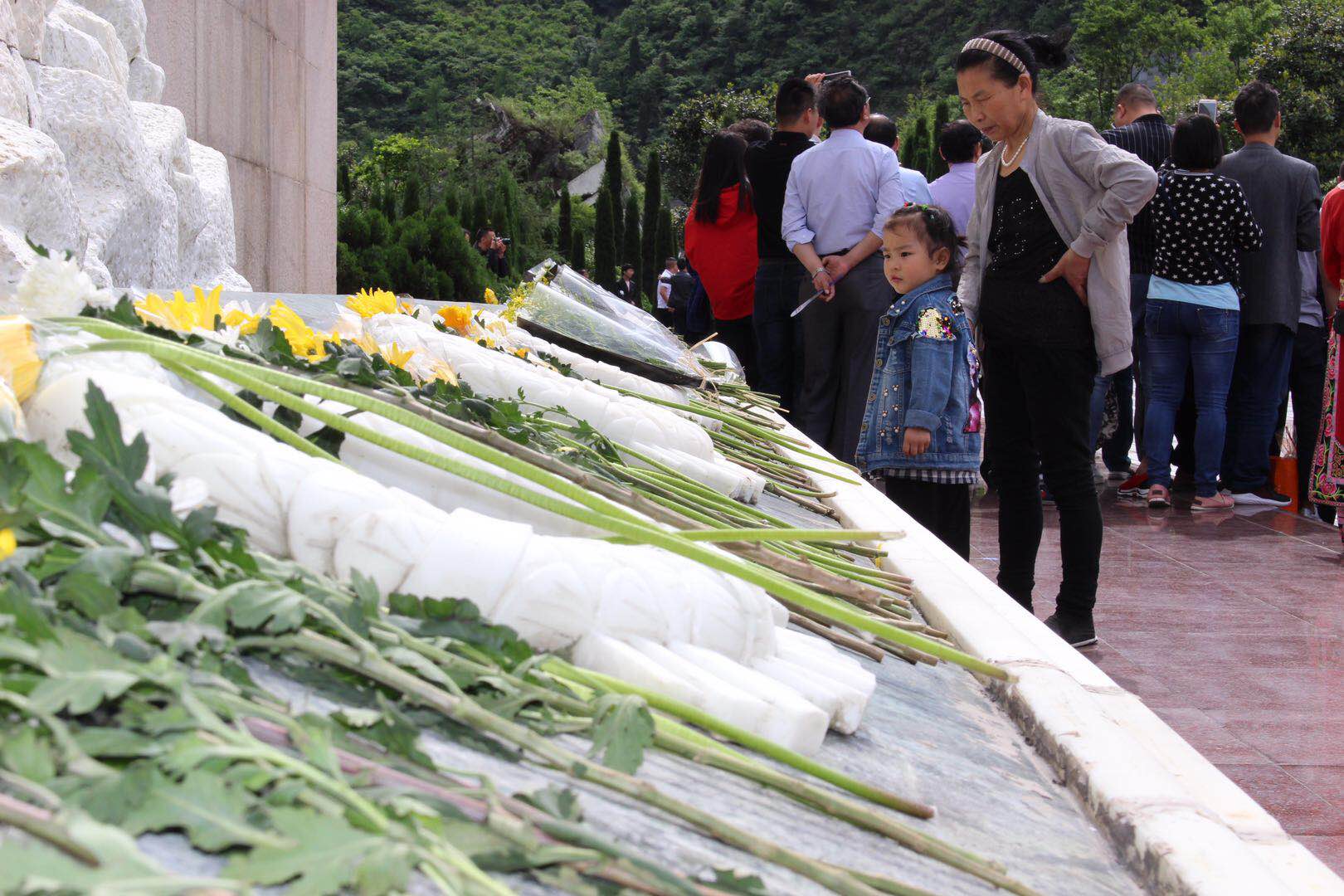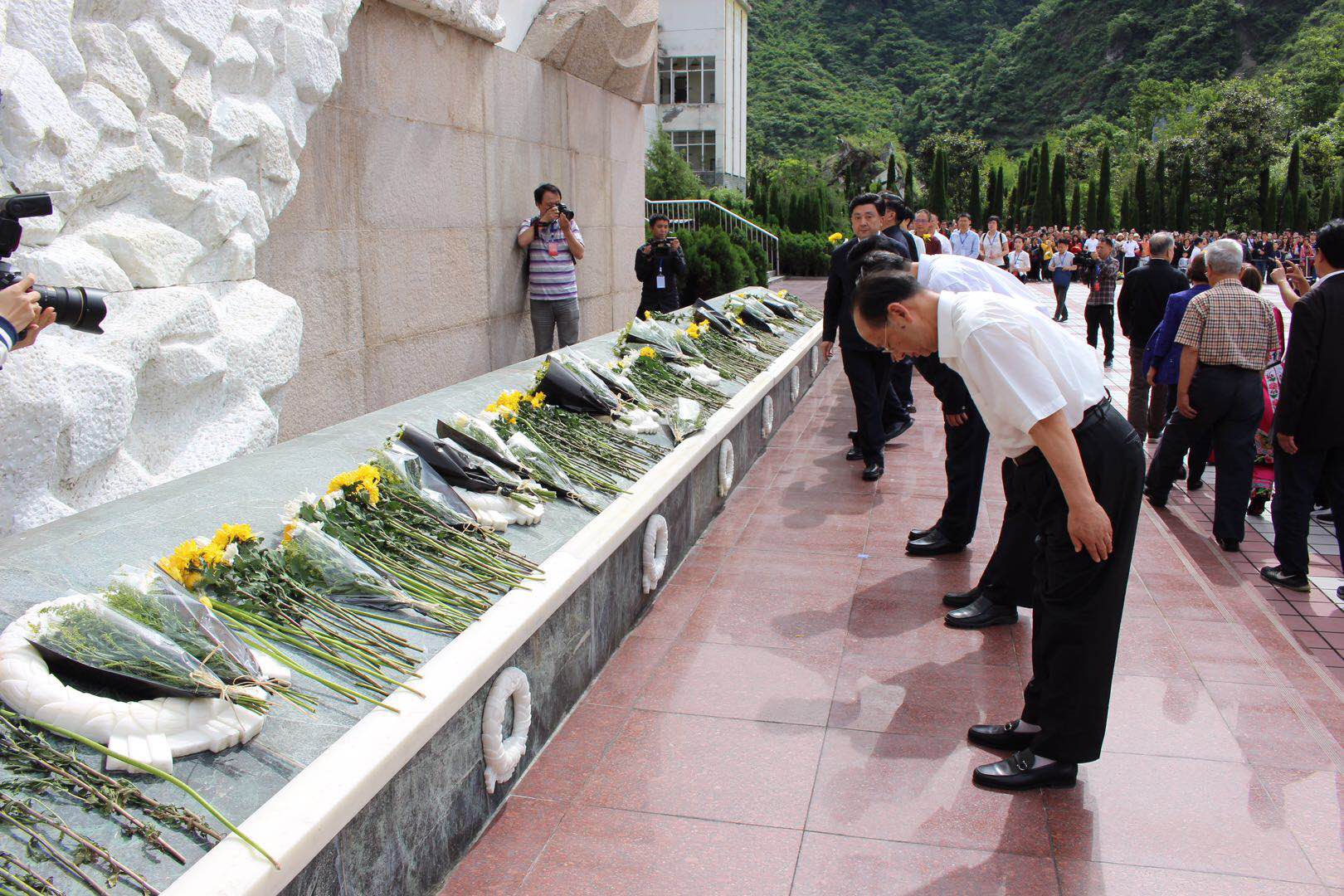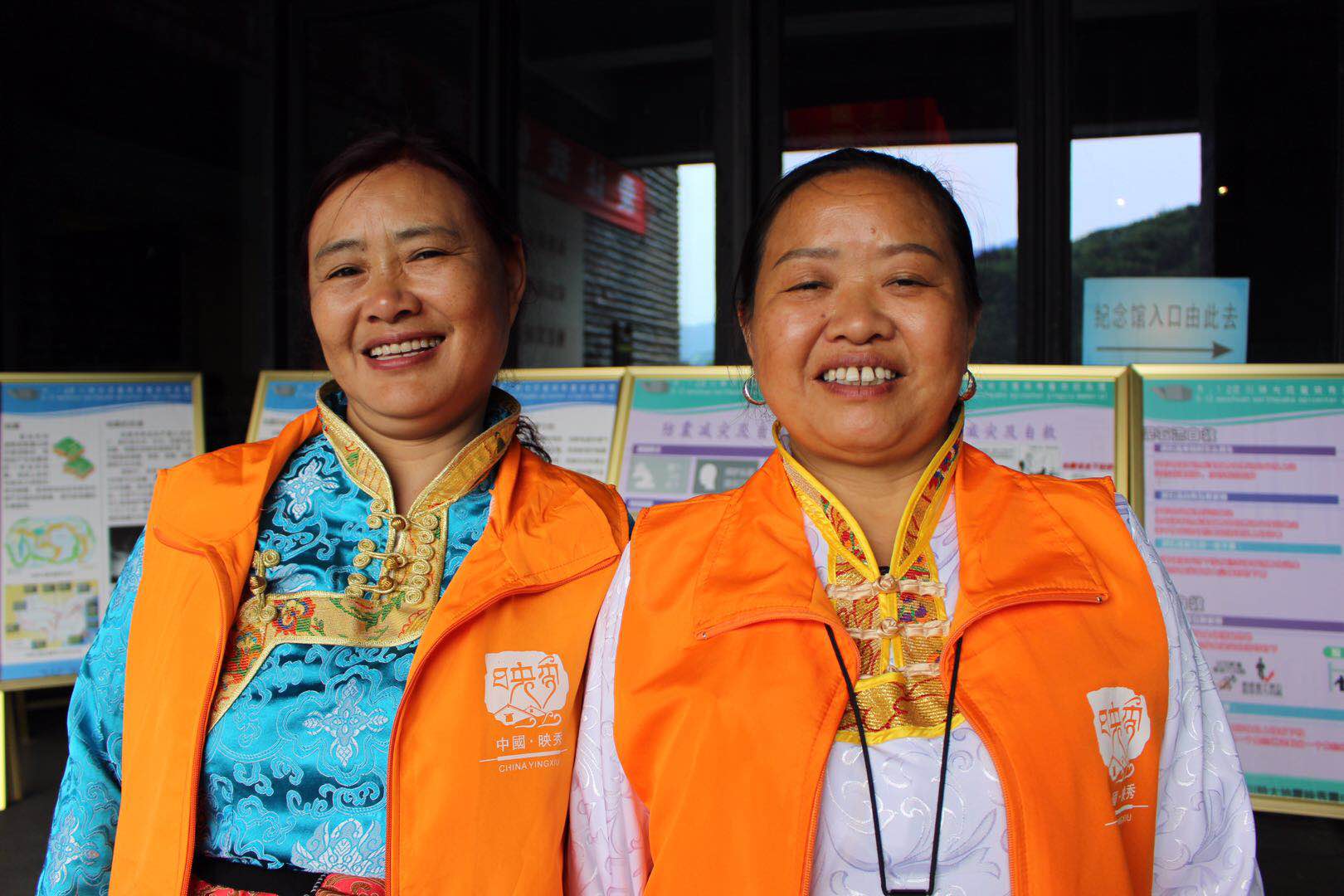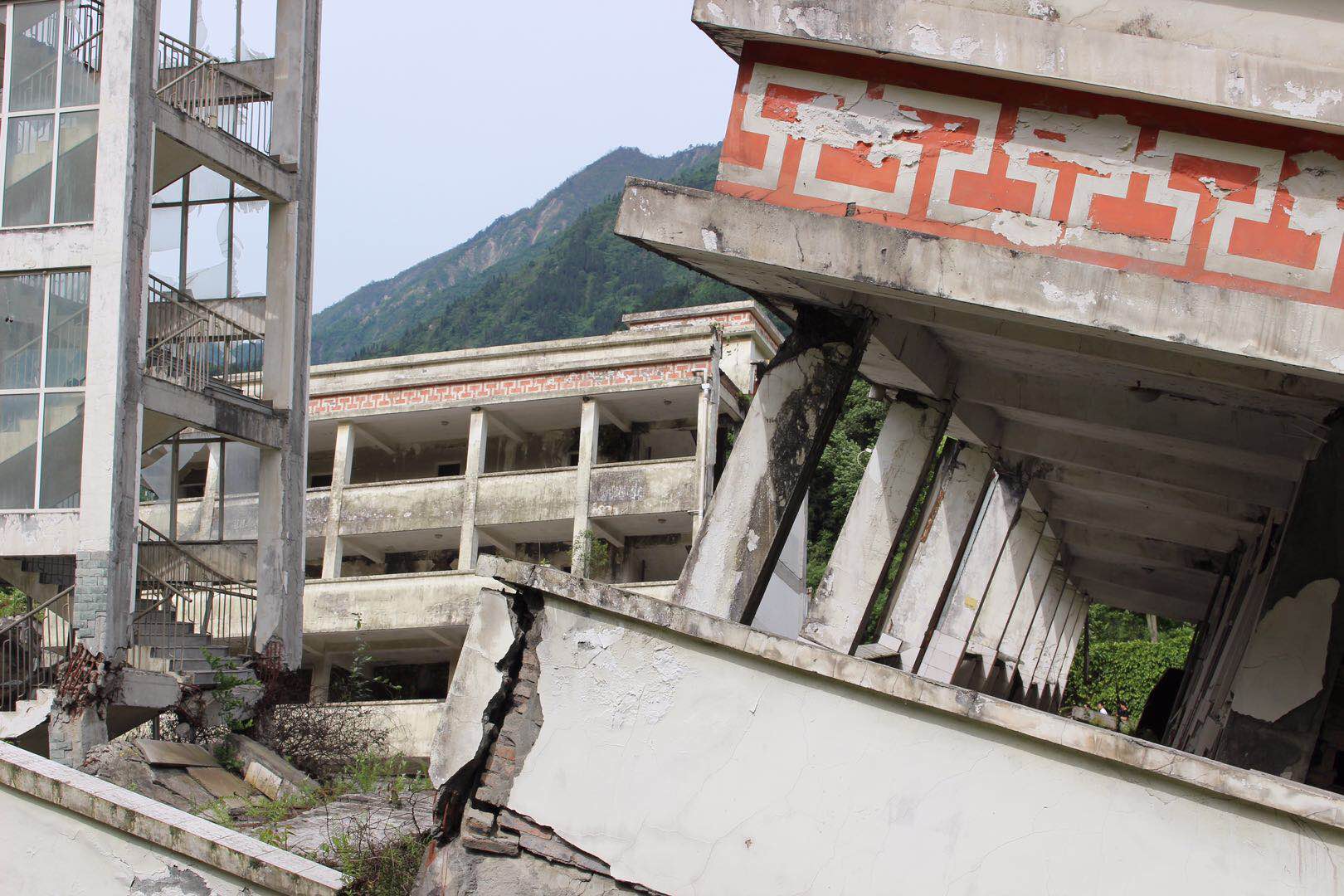Prayer flags, 5-D earthquake simulation, ruins: Yingxiu in 2018
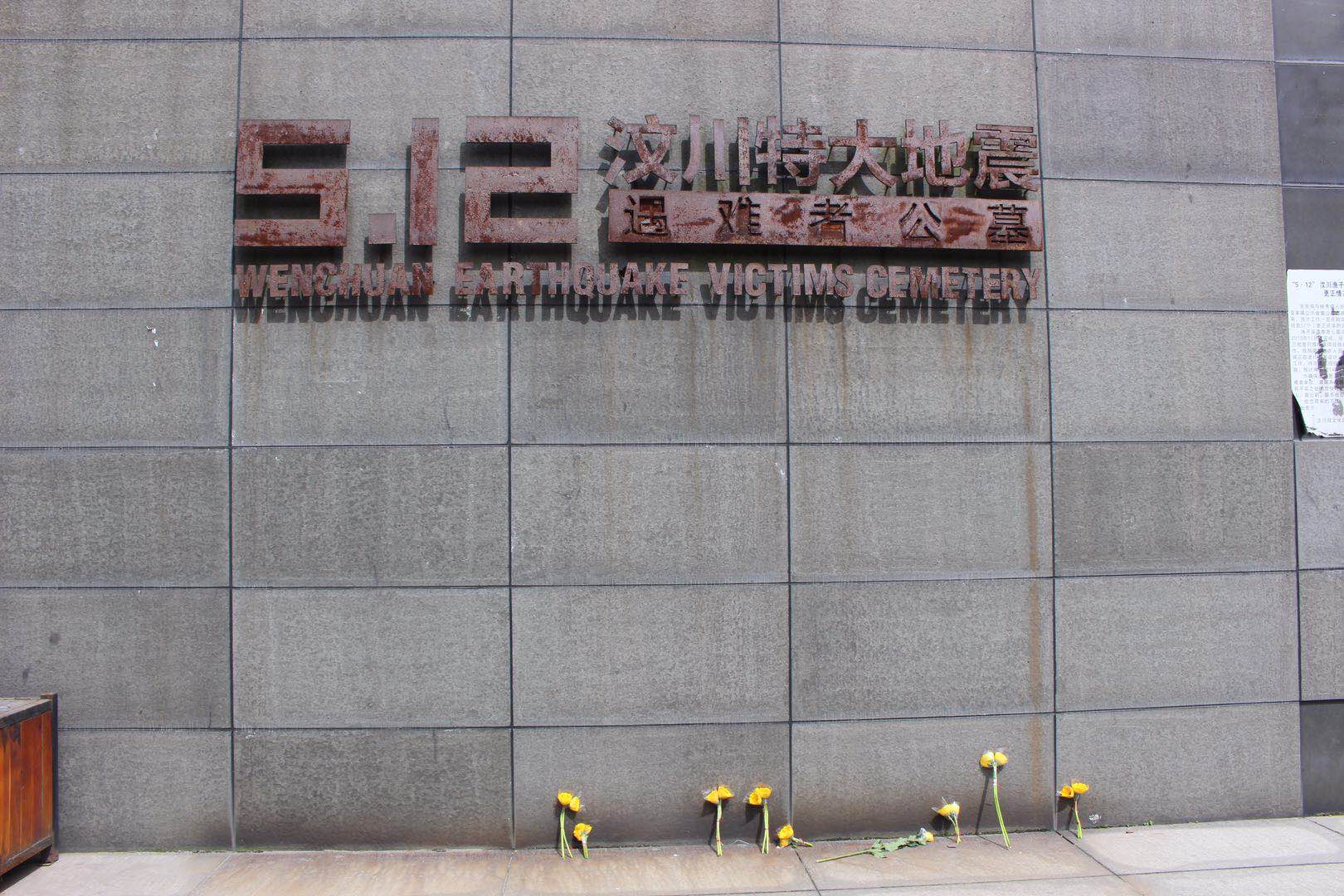
All photos by Cassidy McDonald
YINGXIU — Today marks the 10th anniversary of the magnitude 7.9 earthquake that struck Sichuan at 2:28 pm on May 12, 2018, killing (by official Chinese estimates) 69,000 people and leaving another 18,500 unaccounted for. One of the most devastated areas was Yingxiu 映秀, a small town tucked in a valley in Wenchuan 汶川 County, where the surrounding green mountains are still marked by brown, gravelly landslide scars.
To enter town, visitors must pass through a memorial site, built from the ruins of the destroyed town. The site is an homage to the lives lost, with two main offerings: a museum, where visitors can experience a simulation of the earthquake in “5-D,” and the skeletons of old buildings, preserved in their destroyed state. Among the ruins is the town elementary school, where a generation of Yingxiu’s children were killed.

Most residents now live in three-story buildings in a newly built town, located across the river from the memorial.
China has invested heavily in restoration projects, and the rebuilt spaces are prominent; the town is filled with public grounds where residents relax together. On Friday night, the town teahouse was crowded with residents playing Chinese checkers, drinking bitter black tea, and chatting with their neighbors. Prayer flags fluttered above the public square where ladies danced after dinner, and a new generation of younger children born after the quake chased each other through the streets.
The politics of (not) remembering Wenchuan’s earthquake victims
In addition to memorial ceremonies on Friday and Saturday, residents will mark the weekend on Sunday with a marathon through the surrounding countryside. Among the runners will be survivors and teachers from Yingxiu schools, who run to commemorate the students they lost.
